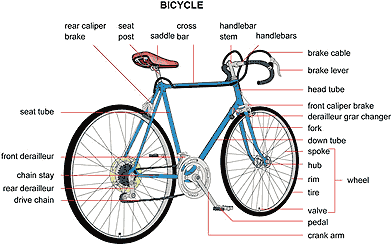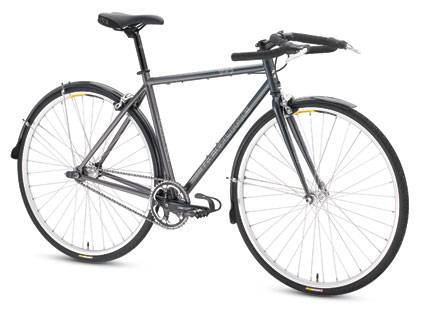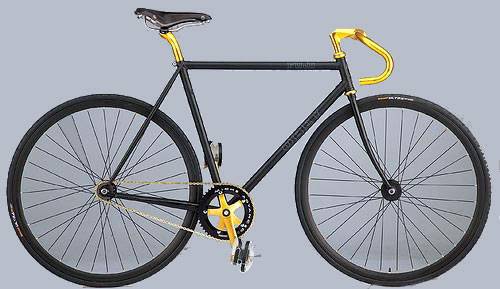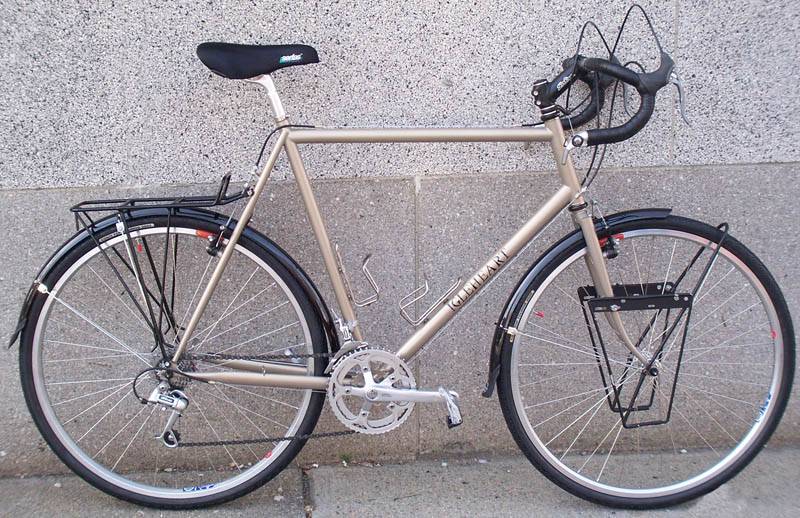There are several places in a bicycle where complexity and daily use seem to be in a vicious conspiracy. Daily use tends to stretch brake cables and fatigue brake springs, to wear down bearings in the hubs and bottom brackets, and to gum up gear shifting mechanisms. Could a bicycle be made simple? Fewer moving parts mean fewer things to go wrong.
Let’s compare two bikes, pictured below. The first is a diagram, so that I can refer to some generic bicycle component names. The second is a picture of an actual Redline bike.


The second bike has many of the same components as the first bike. We can see spokes, hubs, a chain and so forth. Clearly, the second bike is simpler, because it has no front or rear gear-shifting mechanism. It is a single-speed bike, because it has only one gear.
If you ride the second bike on a daily basis, you will still have wear and tear on the bearings, on the brakes, the tires and many other components, just as you would on the first bike. You won’t have wear and tear on gear-shifting mechanisms, because the bike has none. In return for that convenience, you have sacrificed the ability to shift gears and make pedaling easier on hills or in bad conditions. Here in Champaign-Urbana (which is very flat), such a decision is probably OK. If you live in a hilly area, you may need the gears.
I commute on a fixed-gear bike quite a bit. A fixed-gear is a bike which cannot coast. Mine is a particular kind of a single-speed fixed-gear known as a “conversion.” It started out as a ten-speed, but a good friend and I converted it to a fixie. (You can click here to see it at the Fixed Gear Gallery site.) Again, living here in C-U makes one gear rather feasible. I don’t have to worry about maintenance of gear mechanisms, but I have made other choices about the design and components of the bike which add bits and pieces to it, and (in the eyes of some) make it appear cluttered. The image on the web shows my bike in its “country ride” mode, with a pump, a tool bag and a water bottle. When commuting around town, I usually don’t carry those. I don’t need the water bottle, because the rides are short, and I’m afraid the pump and tool bag will get stolen. The bike still looks cluttered in comparison to some other fixed-gear bikes, but it serves my needs, I guess.
I’ve been thinking a lot about this question: what is the proper level of complexity for a bicycle? I’d like to propose a new word in response to that question: veloplexity.
Veloplexity is the complexity of bicycle design as determined by the rider’s own taste and the conditions in which the bicycle will be used.

Let’s look at a bike with a very low level of veloplexity. To the left is a fixed-gear — it must be, because it has no brakes and thus the rider will slow and stop it with his or her leg muscles. It has no gear-shifting mechanisms, no fenders, no pump or water bottle. It’s low level of veloplexity draws your attention to its design — you may (or may not) like the color mix, but it is a daring statement.

At the other end of the spectrum might be a “loaded touring” bike, as pictured to the left, which has a high level of veloplexity, because it is set up to take a lot of extra equipment and baggage on long multi-day tours where gearing will be a necessity. Sheldon Brown gave us this image of a canonical tourer. You can visit The Fully Loaded Touring website for more pictures of tourers.
At this point, that’s as far as my thinking has taken me on this matter of veloplexity. I’m ruminating on it, from time to time, and I hope to refine it and write again about it. If you have some thoughts on the concept, you can email me at [email protected] and help me to elaborate and to understand it better.
Hold your line and keep the rubber to the road, you all.








